EGYPTIAN SITULA WITH WITH OSIRIS, ISIS-HATHOR AND NEPHTHYS Late Period, 664-332 BC A bronze situla with low relief decoration to the outer side, upper register with two sacred boats, middle register with Osiris, Isis-Hathor, Nephthys and a male figure wearing a short tunic and floral crown, possibly Nefertum; lotus flower petals to the lower register; two suspension loops to the rim. 82 grams, 90mm (3 1/2"). Condition Very fine condition. Provenance Property of a North London lady; gifted from her father's collection; formerly with a Mayfair gallery, London, UK; previously acquired in the 1980s. Literature See Excavations and Surveys in Israel, vol.20, 2008, for similar. Footnotes The lotus-shaped situla was a symbolic water vessel used in religious rituals. The waters of the Nile were considered sacred in Egypt and they were used in purifying ceremonies from Pre-Dynastic times until the end of the Roman period. Scenes in a number of temples across Egypt depict the king or priests sprinkling water from a situla onto the floor of the inner sanctum as part of the daily rituals for the enshrined deity. In the Greek and Roman periods the cult of Isis gained prominence across the Mediterranean and beyond, and the use of sacred water became an essential part of the rituals associated with the goddess. A number of situlae have been found at Isis temples across the Roman empire, attesting to their use. At Pompeii, the temple of Isis had a special building for keeping sacred Nile water, and paintings from the site depict priests holding situla and sprinkling water around the temple complex to purify it. In the famous Roman novel "The Golden Ass", by Lucius Apuleius, a scene is described where the priests and devotees of the goddess process the sacred statue through the streets of Corinth on a decorated bier, sprinkling water from a situla to purify the ground before the goddess passes over it.
EGYPTIAN SITULA WITH WITH OSIRIS, ISIS-HATHOR AND NEPHTHYS Late Period, 664-332 BC A bronze situla with low relief decoration to the outer side, upper register with two sacred boats, middle register with Osiris, Isis-Hathor, Nephthys and a male figure wearing a short tunic and floral crown, possibly Nefertum; lotus flower petals to the lower register; two suspension loops to the rim. 82 grams, 90mm (3 1/2"). Condition Very fine condition. Provenance Property of a North London lady; gifted from her father's collection; formerly with a Mayfair gallery, London, UK; previously acquired in the 1980s. Literature See Excavations and Surveys in Israel, vol.20, 2008, for similar. Footnotes The lotus-shaped situla was a symbolic water vessel used in religious rituals. The waters of the Nile were considered sacred in Egypt and they were used in purifying ceremonies from Pre-Dynastic times until the end of the Roman period. Scenes in a number of temples across Egypt depict the king or priests sprinkling water from a situla onto the floor of the inner sanctum as part of the daily rituals for the enshrined deity. In the Greek and Roman periods the cult of Isis gained prominence across the Mediterranean and beyond, and the use of sacred water became an essential part of the rituals associated with the goddess. A number of situlae have been found at Isis temples across the Roman empire, attesting to their use. At Pompeii, the temple of Isis had a special building for keeping sacred Nile water, and paintings from the site depict priests holding situla and sprinkling water around the temple complex to purify it. In the famous Roman novel "The Golden Ass", by Lucius Apuleius, a scene is described where the priests and devotees of the goddess process the sacred statue through the streets of Corinth on a decorated bier, sprinkling water from a situla to purify the ground before the goddess passes over it.
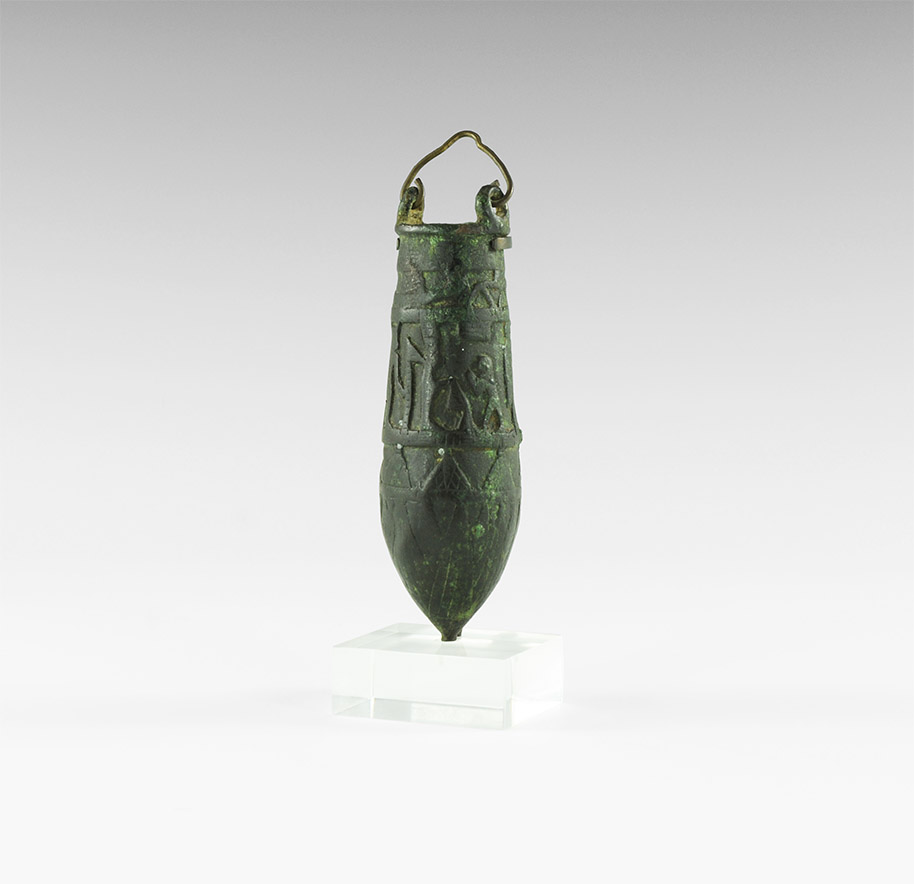
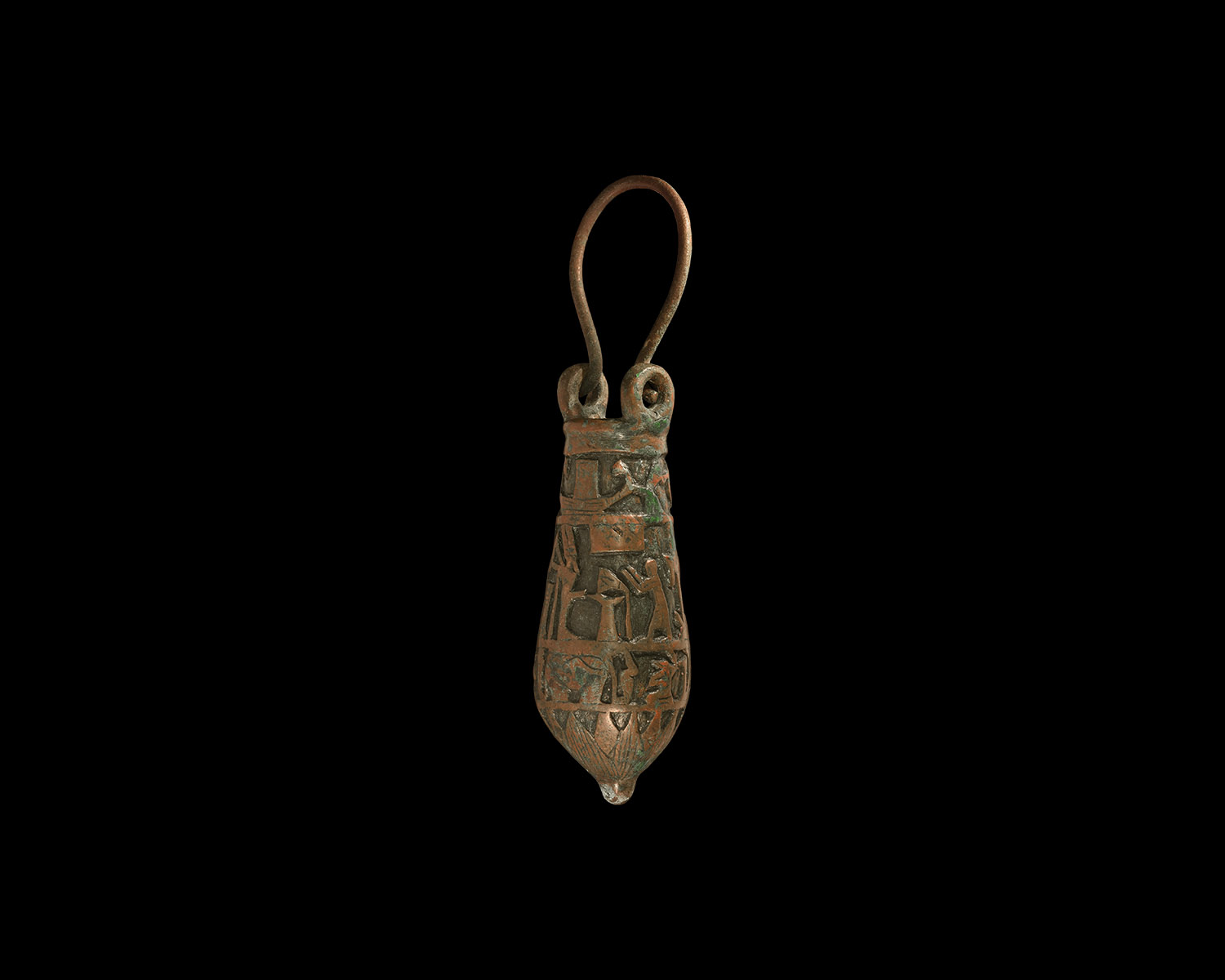


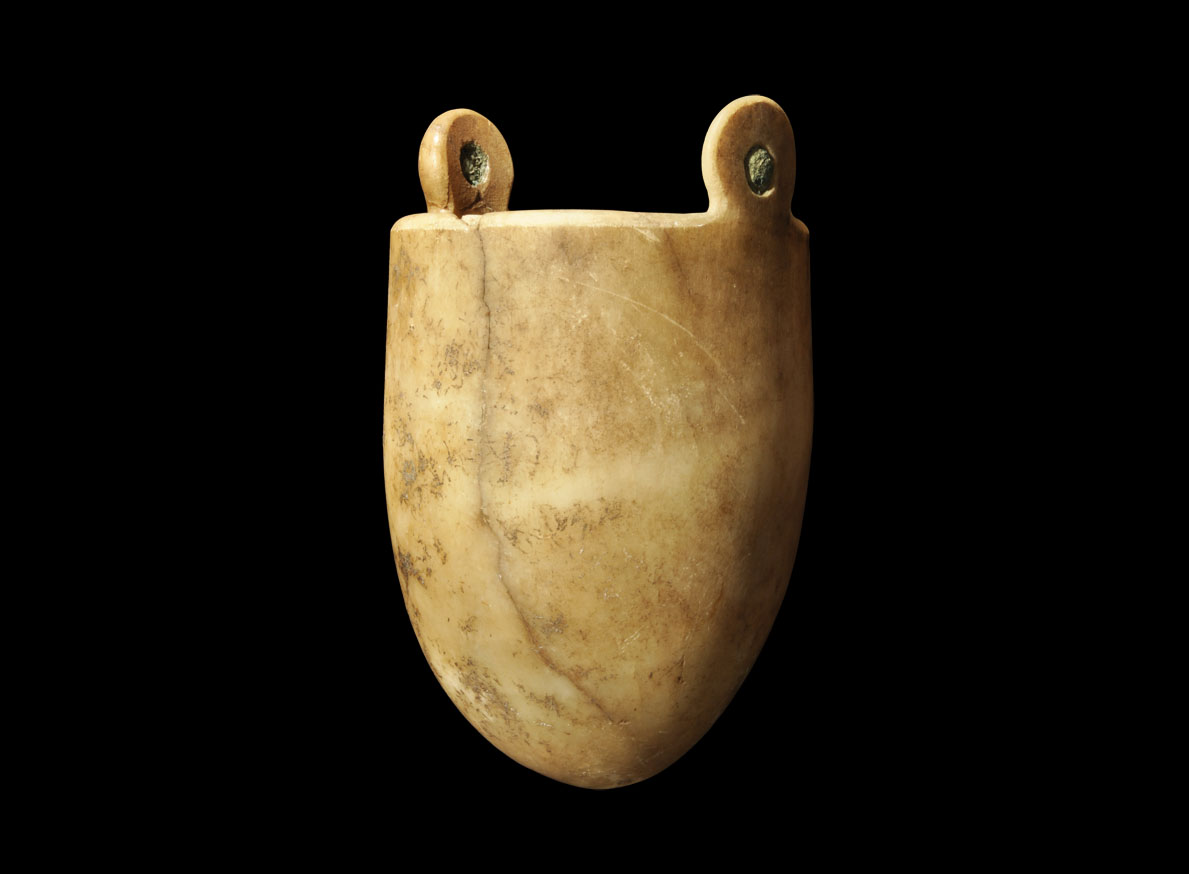





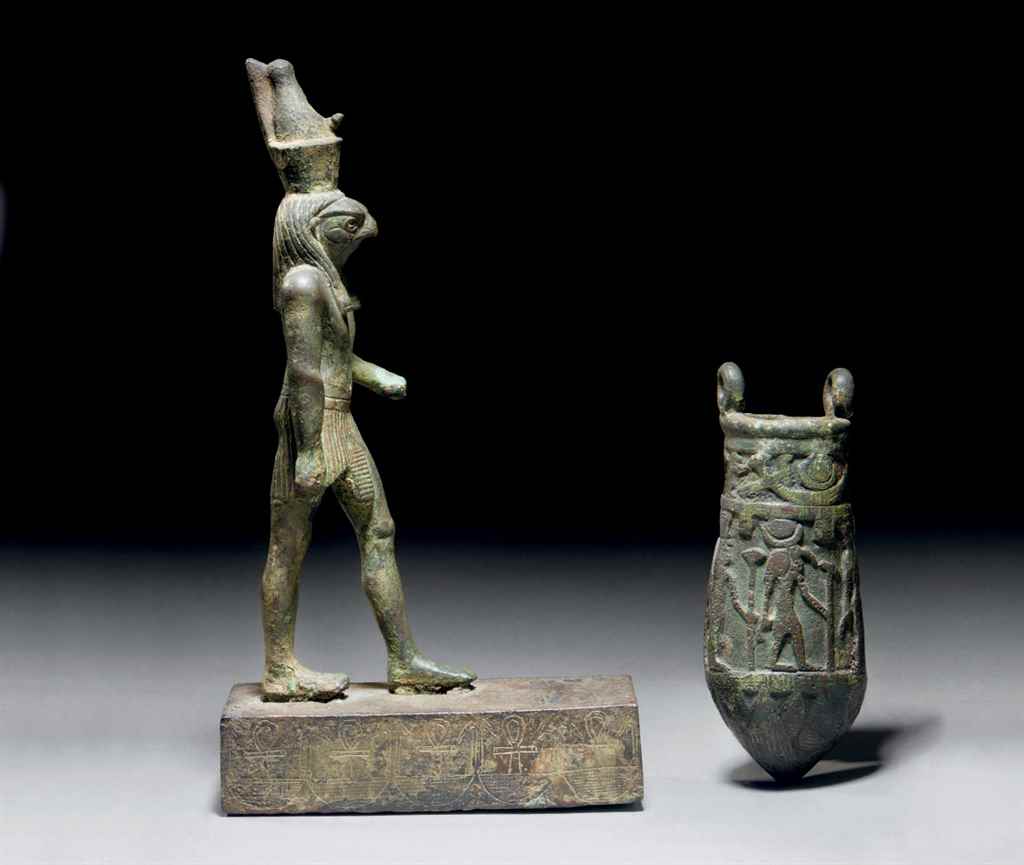


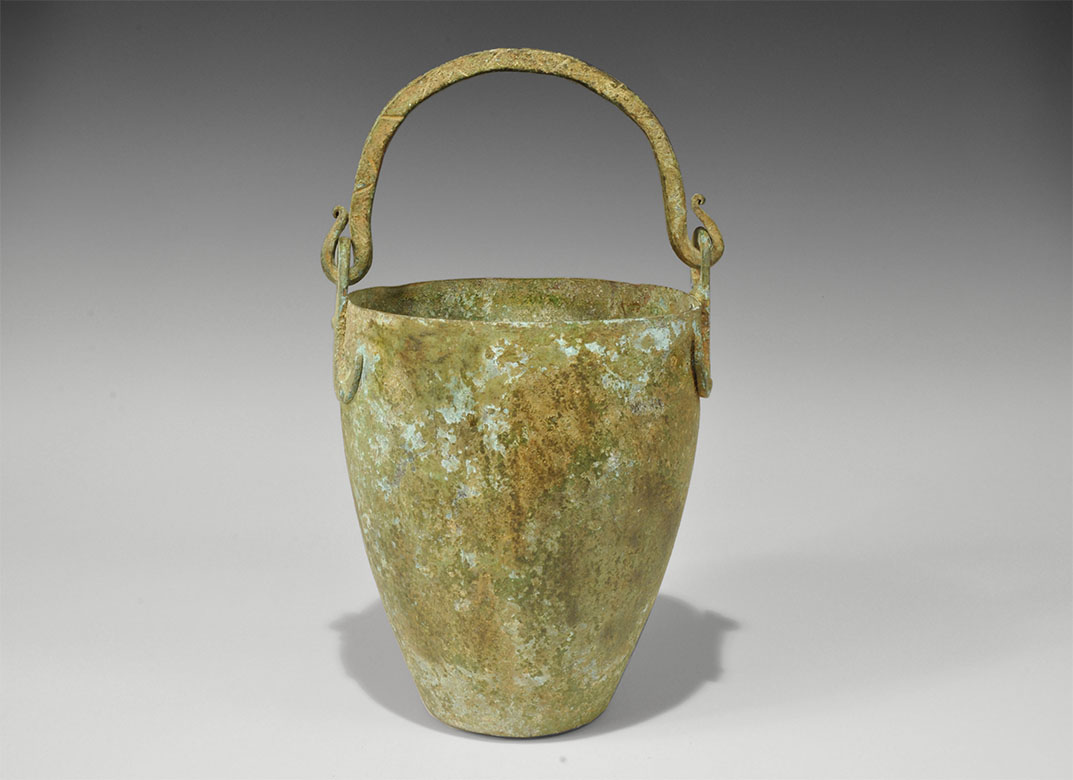

Testen Sie LotSearch und seine Premium-Features 7 Tage - ohne Kosten!
Lassen Sie sich automatisch über neue Objekte in kommenden Auktionen benachrichtigen.
Suchauftrag anlegen